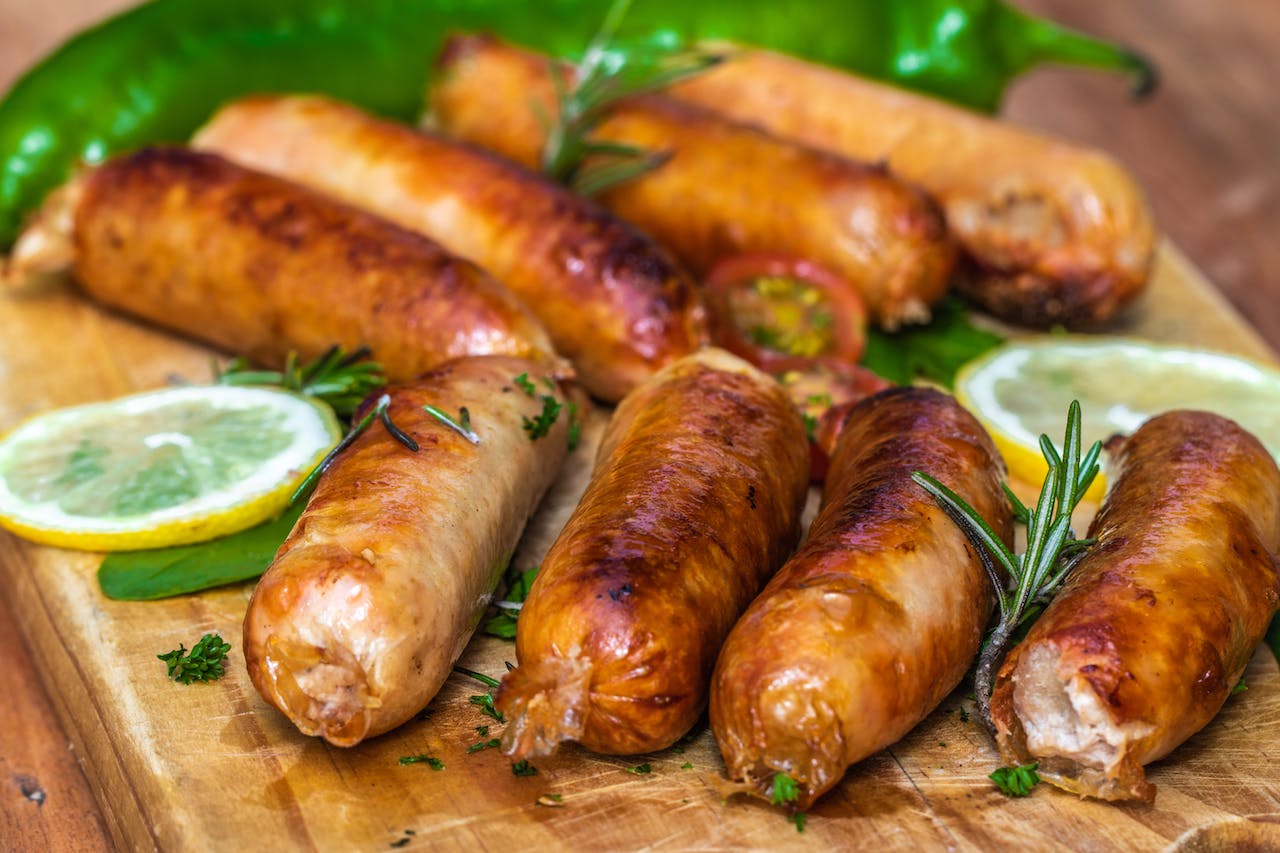
Germany’s culinary landscape is as diverse as its regions, and at the heart of this diversity lies an iconic staple: the German wurst (sausage). With a history steeped in tradition and a flavor palette that ranges from the smoky to the savory, the German wurst is more than just food—it’s a cultural symbol.
The Historical Roots of German Wurst
The history of German sausage dates back centuries, with each region developing its unique variation. The wurst’s evolution is intertwined with Germany’s cultural and historical changes, reflecting the influences of different epochs and the ingenuity of its people in utilizing local ingredients.
Types of German Wurst
- Bratwurst: Perhaps the most famous, Bratwurst varies significantly from region to region. The Nürnberger Bratwurst, small and flavorful, and the Thüringer Bratwurst, known for its distinctive spices, are among the most renowned.
- Weißwurst: A Bavarian specialty, Weißwurst is a mild sausage made from veal and pork back bacon. Traditionally consumed before noon with sweet mustard, it’s a staple of the Bavarian breakfast.
- Blutwurst (Blood Sausage): A rich and hearty sausage, Blutwurst is made with blood, meat, and various spices. It’s a testament to the German philosophy of no-waste in food preparation.
- Knackwurst: Known for its crisp skin and juicy interior, Knackwurst is often made from ground pork and beef, seasoned with garlic.
- Leberwurst (Liverwurst): A spreadable sausage made from liver and other ingredients, Leberwurst is a popular delicacy on German bread.
- Currywurst: A post-war creation, Currywurst is a steamed, then fried sausage, typically cut into slices and seasoned with curry ketchup. It’s a beloved street food across Germany.
The Art of Making and Enjoying Wurst
The process of making German wurst is an art form, involving carefully selected meats, precise seasoning, and traditional methods passed down through generations. Smoking and curing are common, lending unique flavors and textures to the sausages.
Regional Specialties and Recipes
Each region in Germany has its wurst specialties, often accompanied by local recipes and preparation methods. For instance, in Bavaria, Weißwurst is traditionally boiled and served with pretzels and mustard, while in Berlin, Currywurst is often accompanied by fries.
Pairing Wurst with German Beverages
The experience of enjoying German wurst is incomplete without the right beverage. Beers, particularly local brews, are a popular choice. For example, a light Weizenbier pairs wonderfully with Weißwurst, while a robust lager complements the flavors of a spicy Bratwurst.
Wurst in German Festivals and Traditions
Wurst plays a vital role in German festivals and traditions. At Oktoberfest, various types of wurst are enjoyed with beer, while Christmas markets often feature Bratwurst stalls. These events showcase the integral role wurst plays in Germany’s cultural and social life.
The Influence of German Wurst Worldwide
German immigrants have carried their wurst traditions across the globe, influencing sausage-making practices and introducing these flavors to new palates. Today, German wurst can be found in many countries, often with a local twist.
Sustainable Practices in Wurst Production
In recent years, there’s been a growing emphasis on sustainability and ethical practices in the production of wurst. This includes using locally sourced, organic meat and adopting environmentally friendly production methods.
Health and Nutrition
While wurst is a flavorful component of German cuisine, it’s also important to consider its nutritional aspects. Many varieties are high in protein, but they can also be rich in fat and sodium. Moderation and balance are key when incorporating wurst into a healthy diet.
Cooking with Wurst: Recipes and Tips
German wurst is incredibly versatile in cooking. Beyond the traditional methods of preparation, it can be incorporated into stews, casseroles, and even modern culinary creations. Recipes often include regional spices and ingredients, showcasing the diversity of German cuisine.
Vegetarian and Vegan Alternatives
With the rise of vegetarian and vegan diets, there are now wurst alternatives made from plant-based ingredients. These products aim to replicate the texture and flavor of traditional wurst, making the delicacy accessible to a broader audience.
German wurst is more than just a culinary delight; it’s a journey through the rich tapestry of Germany’s history, regions, and traditions. Whether you’re savoring a Bratwurst at a local festival or experimenting with Weißwurst recipes at home, each bite is a testament to the enduring legacy of German sausage-making. From its historical roots to its modern interpretations, the German wurst remains a beloved and integral part of German culture.
This comprehensive exploration of German wurst offers insights into its historical significance, regional varieties, and the cultural traditions surrounding it. Perfect for culinary enthusiasts and anyone interested in the rich flavors and heritage of German cuisine.
Related Recipes:
Liverwurst
Bratwurst
German Blutwurst Recipe
Classical German Sausage
German Sausage with Apples Sauerkraut and Onion
German Sausage Soup
